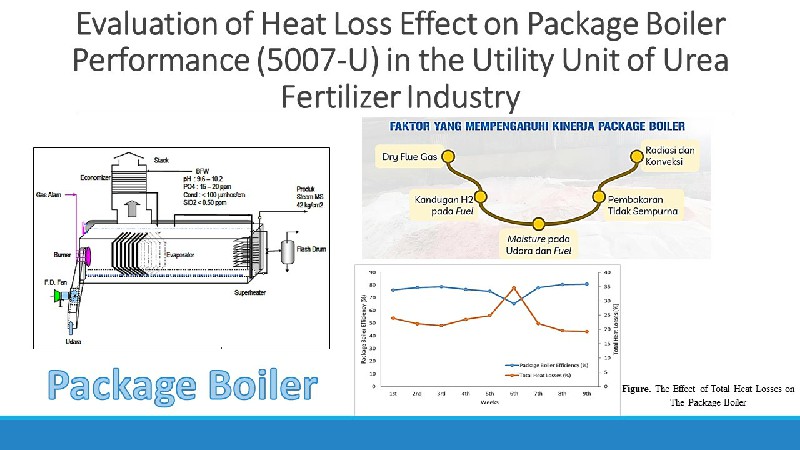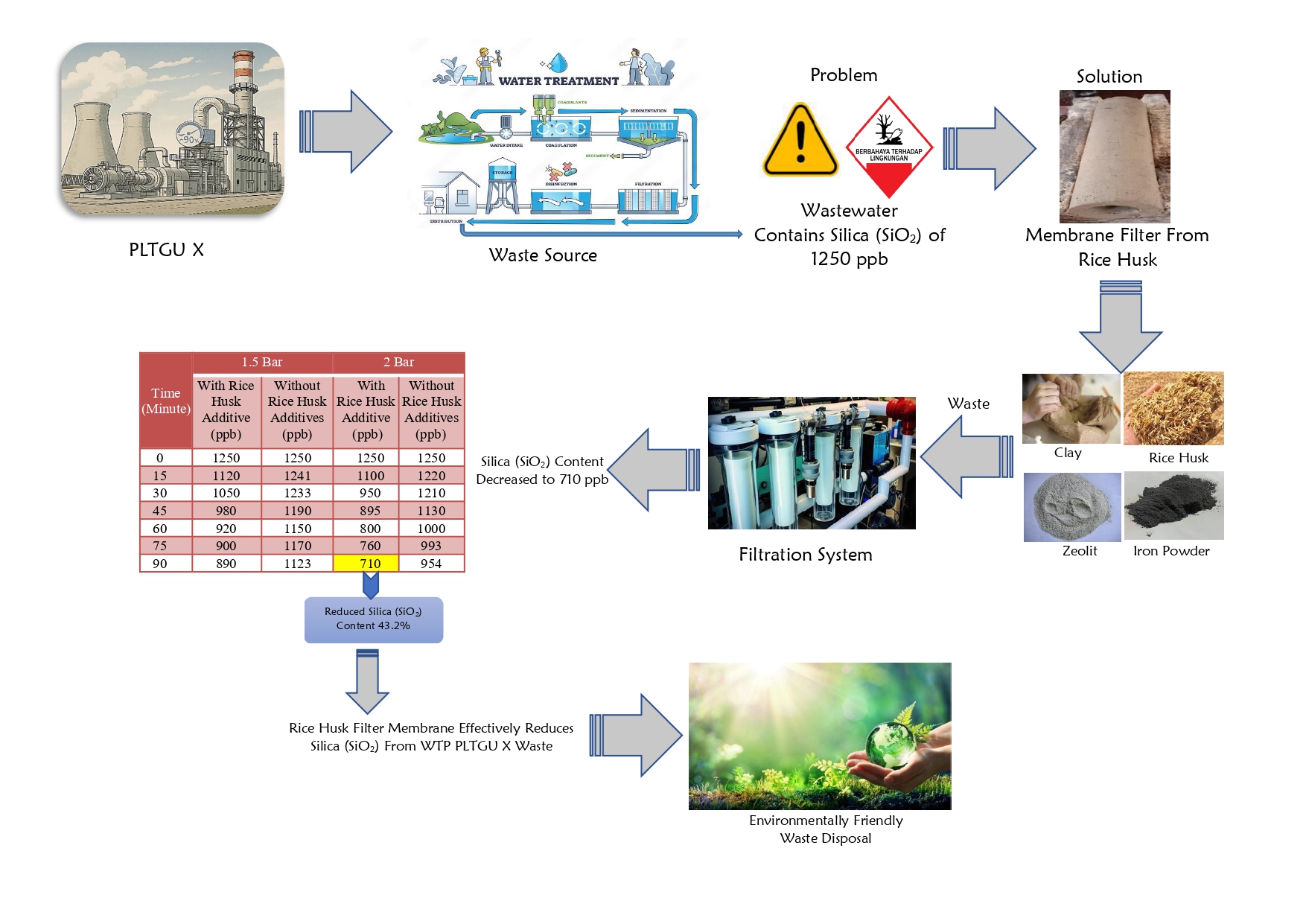Perengkahan Metil Ester dari Minyak Jelantah Menggunakan Katalis Pt/ Al2O3
Downloads
Konsumsi minyak goreng di Indonesia meningkat setiap tahunnya. Penggunaan minyak goreng secara berulang menyebabkan penurunan kualitas mutu. Limbah minyak goreng yang dibuang ke perairan dapat menyebabkan rusaknya ekosistem perairan karena akan menutupi permukaan air sehingga sinar matahari tidak bisa masuk secara maksimal yang menyebabkan meningkatnya nilai Chemical Oxygen Demand (COD) serta Biological Oxygen Demand (BOD). Katalis logam memiliki tingkat sisi aktif yang tinggi dibandingkan dengan katalis lainnya. Penelitian ini melakukan perengkahan metil ester minyak jelantah menggunakan katalis Pt/Al2O3. Metode yang digunakan dalam penelitian ini adalah transesterifikasi pada suhu 55 ºC dan perengkahan dengan variasi konsentrasi katalis 0,6%, 0,7%, 0,8% dan 0,9% berat minyak dalam 500 mL minyak jelantah pada suhu 55 ºC. Tujuan dari penelitian ini adalah untuk mengetahui karakteristik dari biofuel yang dihasilkan dari perengkahan melalui analisa angka asam, angka penyabunan angka iodin dan flash point. Hasil penelitian diperoleh nilai terbaik pada konsentrasi katalis 0,9% dengan kandungan asam lemak bebas 0,0014 mgKOH/g FFA, nilai flash point 165,5 ºC dan angka iodin 2,79 (massa/massa) serta angka penyabunan sebesar 5,3 mg KOH/g.
Downloads
Afriyanti, D., Kroeze, C. & Saad, A. (2016). Indonesia palm oil production without deforestation and peat conversion by 2050, Science of the Total Environment. doi: 10.1016/j.scitotenv.2016.03.032.
Anderson, R. B., Stein, K. C., Feenan, J. J., Hofer, L. J. (1961). Catalytic Oxidation of Methane, U. S.
Arshad, M., Bano, I., Khan, N., Shahzad, M. I., Younus, M., Abbas, M., Iqbal, M. (2018). Electricity generation from biogas of poultry waste: An assessment of potential and feasibility in Pakistan, Renewable and Sustainable Energy Reviews. Elsevier Ltd, 81(September), pp. 1241-1246. doi: 10.1016/j.rser.2017.09.007.
Azam, M. M., Waris, A. & Nahar, N. M. (2005). Prospects and potential of fatty acid methyl esters of some non-traditional seed oils for use as biodiesel in India, Biomass and Bioenergy, 29(4), 293-302. doi: 10.1016/j.biombioe.2005.05.001.
Azeem, M. W., Hanif, M. A., Al-Sabahi, J. N., Khan, A. A., Naz, S., Ijaz, A. (2016). Production of biodiesel from low priced, renewable and abundant date seed oil, Renewable Energy. Elsevier Ltd, 86, 124-132. doi: 10.1016/j.renene.2015.08.006.
Aziz, I. (2007). Kinetika Reaksi Transesterifikasi Minyak Goreng Bekas, Jurnal Kimia VALENSI. doi: 10.15408/jkv.v1i1.209.
Buchori, L. & Widayat. (2007). Pembuatan Biodiesel Dari Minyak Goreng Bekas Dengan Proses Catalytic Cracking, Teknik, 28(2), 83-93.
Hidayati, N., Ariyanto, T. S., & Septiawan, H. (2017). Transesterifikasi Minyak Goreng Bekas menjadi Biodiesel dengan Katalis Kalsium Oksida, Jurnal Teknologi Bahan Alam, 1(1), 1-5.
Ketaren, S. (1986). Pengantar Teknologi Minyak dan Lemak Pangan, Universitas Indonesia Press, (2), pp. 30-36.
Knothe, G. (2005). Dependence of biodiesel fuel properties on the structure of fatty acid alkyl esters, Fuel Processing Technology, 86(10),1059-1070. doi: 10.1016/j.fuproc.2004.11.002.
Leung, D. Y. C. & Guo, Y. (2006). Transesterification of neat and used frying oil: Optimization for biodiesel production, Fuel Processing Technology. doi: 10.1016/j.fuproc.2006.06.003.
Moazeni, F., Chen, Y. C. & Zhang, G. (2019). Enzymatic transesterification for biodiesel production from used cooking oil, a review, Journal of Cleaner Production. Elsevier Ltd, 216, pp. 117-128. doi: 10.1016/j.jclepro.2019.01.181.
O'Connell, M., Kolb, G., Zapf, R., Men, Y., & Hessel, V. (2009). Bimetallic catalysts for the catalytic combustion of methane using microreactor technology, Catalysis Today, 14(3-4), 306-311. doi: 10.1016/j.cattod.2008.10.053.
Prasetyo, J. (2018). Studi Pemanfaatan Minyak Jelantah Sebagai Bahan Baku Pembuatan Biodiesel, Jurnal Ilmiah Teknik Kimia UNPAM, 2(2), 1-10.
Risnoyatiningsih, S. (2010). Biodiesel From Avocado Seeds By Transesterification Process, Jurnal Teknik Kimia, 5(1), 345-351.
Sahar, Sadaf, S., Iqbal, J., Ullah, I., Bhatti, H. N., Nouren, S., Habib-ur-Rehman, Nisar, J., Iqbal, M. (2018). Biodiesel production from waste cooking oil: An efficient technique to convert waste into biodiesel, Sustainable Cities and Society. Elsevier, 41(May), 41, pp. 220-226. doi: 10.1016/j.scs.2018.05.037.
Santosa, S. J. (2008). Palm oil boom in Indonesia: From plantation to downstream products and biodiesel, Clean - Soil, Air, Water. doi: 10.1002/clen.200800039.
Schuchardt, U., Sercheli, R., & Matheus, R. (1998). Transesterification of vegetable oils: a review general aspects of transesterification, J. Braz. Chem. Soc., 9(1), 199-210. doi: 10.1590/S0103-50531998000300002.
Standar Nasional Indonesia. (2015). SNI 7182:2015.
Wako, F. M., Reshad, A. S., Bhalerao, M. S., & Goud, V. V. (2018). Catalytic cracking of waste cooking oil for biofuel production using zirconium oxide catalyst, Industrial Crops and Products, 118, 282-289. doi: 10.1016/j.indcrop.2018.03.057.
Copyright (c) 2019 CHEESA: Chemical Engineering Research Articles

This work is licensed under a Creative Commons Attribution-NonCommercial-ShareAlike 4.0 International License.
With the receipt of the article by CHEESA Editorial Board and the decision to be published, the copyright regarding the article will be transferred to CHEESA Journal.
CHEESA has the right to multiply and distribute the article and every author is not allowed to publish the same article that was published in this journal.

This work is licensed under a Creative Commons Attribution-NonCommercial-ShareAlike 4.0 International License.
Under the following terms:
Attribution ” You must give appropriate credit, provide a link to the license, and indicate if changes were made. You may do so in any reasonable manner, but not in any way that suggests the licensor endorses you or your use.
NonCommercial ” You may not use the material for commercial purposes.
ShareAlike ” If you remix, transform, or build upon the material, you must distribute your contributions under the same license as the original.







